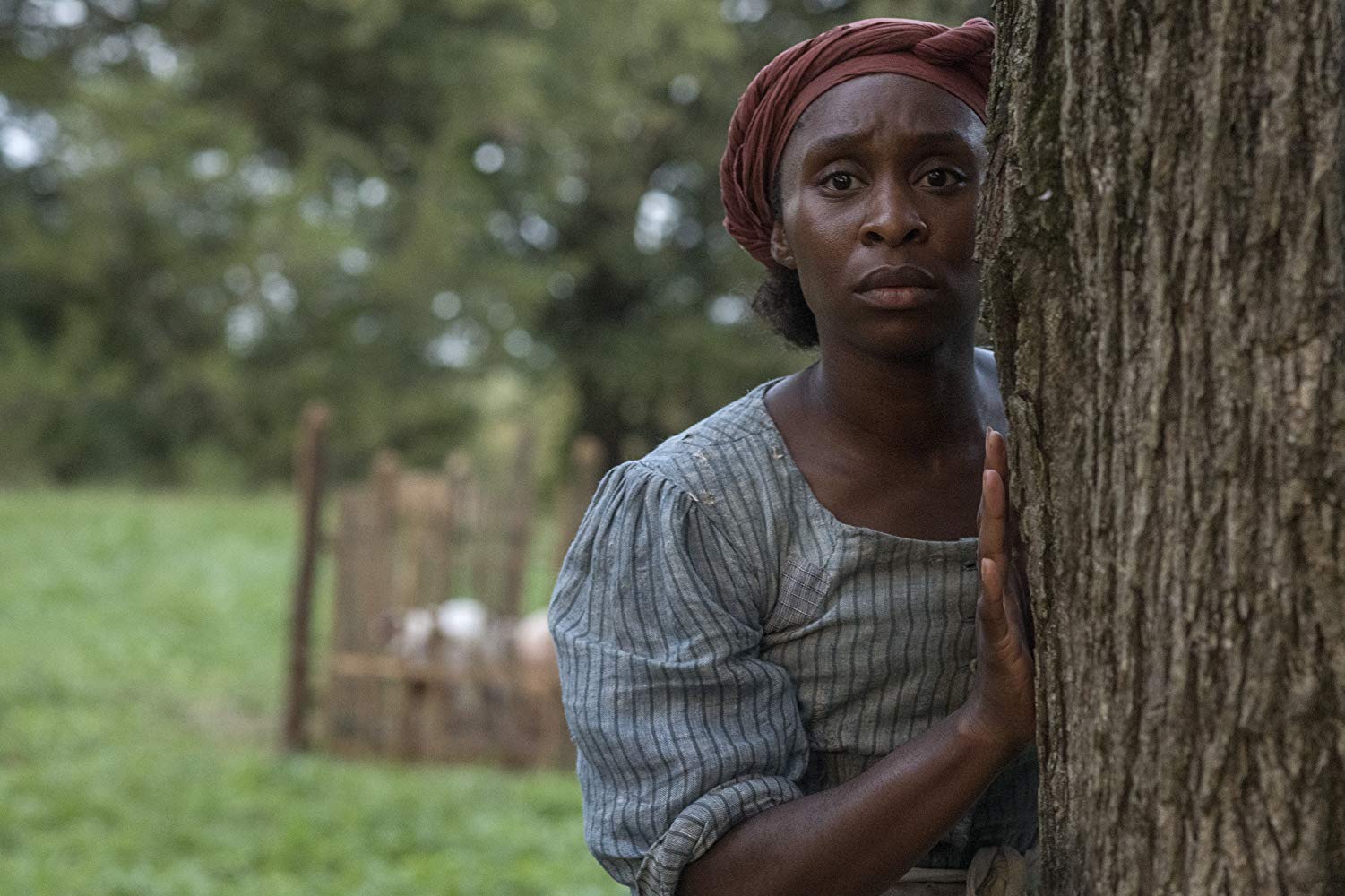Well, lookie here; a casting director actually decided this particular “Moses” wasn’t white. That, of course, didn’t stop the original speculation of Julia Roberts as the escaped-slave-turned-liberationist. Hey, white Jesus and white Moses are so replete among our national collective misunderstanding, why not white Harriet Tubman, too?
On the Maryland plantations where she grew up, Araminta Ross went by “Minty,” because of her childhood fondness of Mentos. Seriously, I’m so glad she chose “Harriet” as her free name because as historical names go, “Minty” lacks a certain weight, y’know? It’s like finding out that either Martin Luther or MLK, Jr. went by “Bubbles.”
Having written my sixth grade book report on Frederick Douglass instead of Ms. Tubman, there are many details about Harriet I never learned. I always pictured her as Madea, but she was under five feet tall. I thought of her as born in Alabama or Mississippi, but she was from Maryland. Lastly, I imagined her Underground Railroad as responsible for hundreds upon thousands of runaway slaves, but Harriet was responsible for just 70 freed slaves in 13 expeditions.
Before you get too, “well, gee, so what?!” about those relatively modest numbers (as I am guilty of), I think we should all try and picture exactly how difficult it might have been for a slave to escape Mississippi: Obviously, you couldn’t hide your skin color which meant travel was limited to night and places where there wasn’t arable farmland. Assuming you could live off dirt and find seclusion from daylight, there’s a matter of avoidance – outside a radius of, say, 10 miles, I doubt you could trust a single face you encountered no matter what color, and you’d also have to avoid all bloodhounds and horses. Being able to read and write English would be a plus, but when would a slave learn such things? Also, being able to read a map or ride a horse or swim might help. Again, when would a slave acquire such knowledge? And, of course, there’s a simple matter of distance. A slave in 1850 Mississippi guided by the North Star could travel almost 1,000 miles without ever having the expectation of a friendly face. And, of course, there’s a huge trust factor, isn’t there? At some point, the escape to freedom assumes there exists a place where black people are free and welcome, and that it is accessible; such understanding would be quite a leap for a deliberately uneducated slave, wouldn’t it?
At the time of the Civil War, there were four million slaves. In the history of slave-owning America, approximately 100,000 had managed to escape to freedom. 100,000/4,000,000 is one in forty. Given the hundreds of years of slaving, I’d say that number is more like 1 in 100. It’s possible that –given the risks she took—history has underestimated Ms. Tubman.
Minty/Harriet (Cynthia Erivo) was married to, of all things, a free black man (Zackary Momoh). Of course, in slavery circles, marriage vows held “until death or distance do we part.” As Minty was getting a fresh reputation ‘round the farm, that was only gonna be too soon. In the film’s most exciting set of scenes, Minty foregoes all companions and slips through the escaped slave network of traps, pitfalls, and ugly geography (♪lay low, sweet Harriet) to make it to Philadelphia. Yay! But she left everybody behind. Boo! Naturally, she’ll just have to go back, and back, and back again, and this is how legends are born.
The film itself is a methodical retelling. I can’t say there’s anything obviously or historically wrong with the events of Harriet’s life in 1849-1850s Maryland, New York, and Pennsylvania. The film threw in her encounters with Frederick Douglass and John Brown without name dropping either, which was nice (we know who these folks are; don’t patronize us). But it also shied away from Harriet’s emotional strength in favor of her spiritual strength. Time and time again, the film presented Harriet Tubman as a mystic of sorts, tapping into to a divine God-cradled sixth sense of where danger lay and how to escape it. Honestly? I think that completely undermines who Harriet is as a person.
Harriet displays the PG version of slavery, which also does the subject a disservice. Slaver atrocities are (mostly) either shown off-screen or hinted at through ugly scars. This is great for the book report-writing 10-year-old who perhaps can’t yet stomach full reality, but remains a large injustice among those –and there are literally millions of Americans described as such —who truly believe slavery “wasn’t that bad.” It was. Don’t be an asshole. And don’t spare the gore in the next slave-themed historical recreation. Americans NEED to see it.
North Star escapees inherit
A legacy of pain we can parrot
But hinting makes me frown
When it comes to watered-down
Believe me, I just can’t Big Bear it
Rated PG-13, 125 Minutes
Director: Kasi Lemmons
Writer: Gregory Allen Howard and Kasi Lemmons
Genre: Book report material
Type of being most likely to enjoy this film: Any executive breathing a sigh of relief that Julia Roberts wasn’t cast as the lead
Type of being least likely to enjoy this film: Racists




